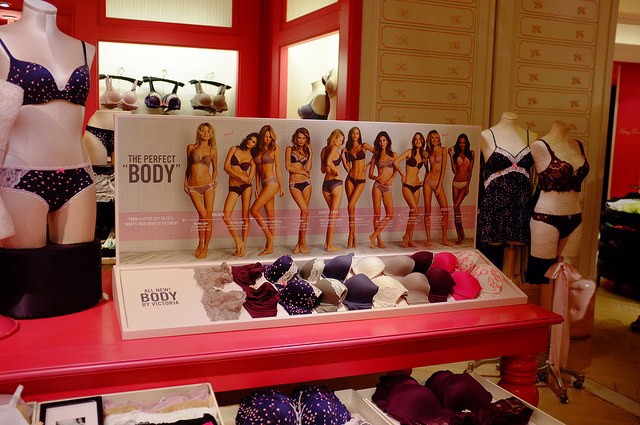How Much Should a Good Bra Cost?

I am not going to get into the particulars of what I am wearing underneath my clothes, but I will tell you that I bought it at Target. I actually prefer this cheap Target bra, which might have cost me $15, to the more expensive one I got at Victoria’s Secret — it’s much more comfortable, probably because it’s not trying to contour anything into a specific shape.
I know there are better bras out there, both in terms of structural and visual design. The bra I’m wearing is the equivalent of my wire cube bookshelf: it has one job, which is to hold things up. And yes, I did pick the cheapest one — or, probably, the third-cheapest one.
If you are a person who — for lack of another euphemism — needs a better bookshelf, you might have done some investigation into independent lingerie designers, who arguably provide better structure and design than Victoria’s Secret or Target or wherever you buy your support materials.
You might also have been turned off by the cost; $100+ for a single bra, and you’re going to need at least five, right? (Black, nude, convertible strapless black, convertible strapless nude, and sport. And that’s just the non-bare minimum.)
Which brings me to Arabelle Sicardi’s “The Astonishing True Cost of Your Bra,” which is out on Racked today and reveals why those high-quality bras come with high price points:
“People look at a garment and say, ‘Oh, this is so much more than I would pay at Macy’s’ — and of course it is, it definitely is! Costs in New York to produce something are higher than costs in Bangladesh, where things in Macy’s are produced.” [independent designer Angela Friedman] explains. Pricing is based on her expenses, material, labor, hourly rates, supplies, editorial costs, machinery costs — all of which are more expensive in New York. Once the item is actually sold in retail stores, there are a host of other costs. “Marketing, shipping, credit processing, packaging, website costs,” Friedman lists, “In every single garment, it is your basic cost of what you actually see in the fabric, plus a little to cover overhead and expenses. And don’t forget all the taxes.”
That’s not too much of a surprise to anyone who’s ever tried to run an independent business — there are a lot of costs involved — but Sicardi takes it a step further, noting that even basic materials like fabric are harder for independent designers to source and purchase:
The slow degradation of the garment manufacturers worldwide in the UK, the US, and elsewhere have limited the options available to designers drastically, making finding and using locally sourced, ethically produced materials harder than ever.
Friedman explains it from her Upper West Side studio: “The Garment District in New York is about 3% of what it was 20 years ago. It’s a huge challenge. There are stores closing every day, vendors are leaving — that’s kind of become the norm. I moved to New York six years ago, and at that point there was still enough happening that you felt like you could do something with it. Now, the resources are so extremely limited, the factories are closed, a lot of the designers have moved elsewhere as well. It’s more intimidating, because you don’t know where to find the things that you used to be able to find.”
To be able to find those fabled, perfect rolls of fabric, you have to know people. And in the business of breasts, that requires a combination of time clocked in and money rendered.
That’s why a single Friedman bralette — the type of thing I could grab at Target for under $15 — costs $100. Arguably, the Friedman bralette is much better than the Target one, though I can’t confirm that because I’m not going to buy a $100 bralette.
But I bet some of our Billfold readers have ventured into the independent lingerie market, so I’ll ask you: are these bras much better than their retail alternatives? Also, to anyone who wants to share: how much are you willing to pay for a good bra?
This story is part of The Billfold’s DIY Month.
Photo credit: Antonio Rubio
Support The Billfold
The Billfold continues to exist thanks to support from our readers. Help us continue to do our work by making a monthly pledge on Patreon or a one-time-only contribution through PayPal.
Comments